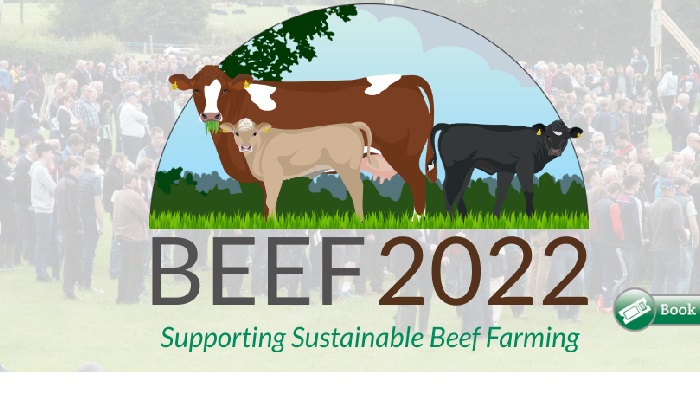05 July 2022
Strategies to reduce methane emissions from Irish beef production

Methane is a GHG that is 28 times more potent to the environment than carbon dioxide. Methane produced by ruminant livestock accounts for nearly 60% of Irish agricultural related greenhouse gas (GHG). Researchers* from Teagasc and UCD give information on research to reduce methane emissions.
Paul Smith, Teagasc Grange spoke to attendees at BEEF2022 about strategies of reduce methane emissions from Irish beef production
Plant matter consumed by ruminant livestock is digested by members of a microbial ecosystem residing in the rumen (forestomach). One group of rumen microbes, known as methanogens, produces methane, a wasteful end product of ruminal feed digestion. This accounts for nearly 60% of Irish agricultural related greenhouse gas (GHG). Methane is a GHG that is 28 times more potent to the environment than carbon dioxide.
Voluntary feed intake is the largest contributor to the quantity of methane emitted by an animal. Simply put, as an animal’s level of feed intake increases, more feed is fermented in the rumen. This both benefits the supply of energy and protein to the animal, but also elevates the supply of substrates to methanogens (mainly hydrogen and carbon dioxide), leading to an increased synthesis of methane in the rumen. Indeed, a recently-completed Teagasc project, RumenPredict, established that for an indoor finishing ration, beef cattle produce, on average, 230 g of methane per day equivalent to 22 g of methane for every kg of dry matter intake.
Mitigation Strategies
- Reducing age of slaughter
- Pasture management
- Dietary supplementation
- Breeding
Summary
- Methane is produced during the digestion of feed in the forestomach of ruminant livestock.
- Intensively-finished beef cattle offered a high-concentrate on average produce approximately 230 g of methane per day, equivalent to 22 g of methane for every kg of dry matter consumed.
- A suite of anti-methanogenic additives have been identified using an in vitro rumen simulation technique system. The most promising additives are now being assessed in sheep and beef cattle for their in vivo anti-methanogenic potential and effects on animal production.
- Low residual methane emissions (RME) beef cattle produce 30% less methane but maintain the same level of feed efficiency and carcass output as high RME animals.
- Achieving methane emissions reduction targets for ruminants will require a combination of strategies focused on suppressing methane output.
Read more detail on Strategies to reduce methane emissions from Irish beef production
*Paul Smith1, David Kenny1, Emily Roskam1, Marie O’Rourke1, Alan Kelly2, Maria Hayes3, Stuart Kirwan1 and Sinéad Waters1
1 Teagasc, Grange Animal & Grassland Research and Innovation Centre, Dunsany, Co. Meath
2 University College Dublin, School of Agriculture and Food Science, Belfield, Dublin 4
3 Teagasc Food Research Centre, Teagasc Ashtown, Dublin
